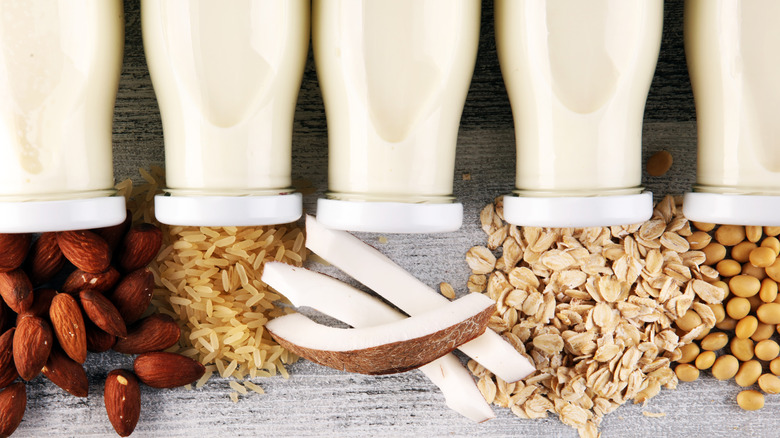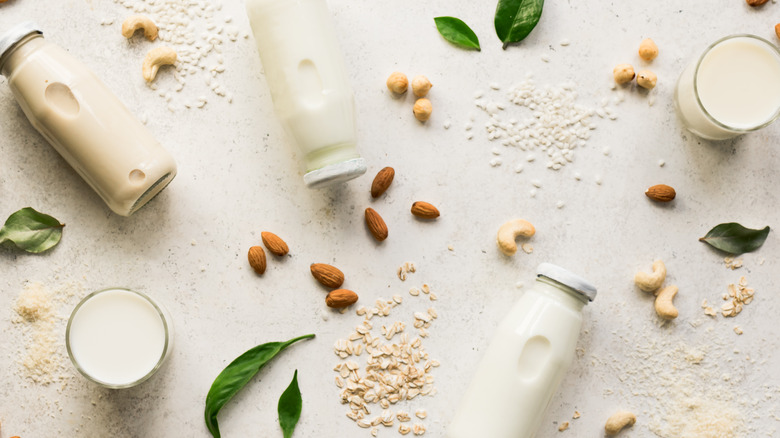What You're Doing Wrong When Making Your Own Plant Milk
If you've ever thought that there appears to be an ever-increasing number of non-dairy milk options, you would be correct. People prefer plant milks for a wide variety of reasons. Some people can't have dairy, and others prefer the health benefits of consuming a plant-based diet. Maybe others even simply enjoy the taste of plant milks over dairy milk. In any case, plant milks are more popular than ever, and people have turned to making their own.
Oat milk and almond milk are two options that are super easy to make at home, though you could make rice, cashew, and soy milks, among many others, at home too (via Simple Vegan Blog). Homemade plant milks are cheaper than store-bought plant milks, and they often taste better too because they're fresh, natural, and free of preservatives. Plus, you get to control their sweetness and thickness. However, if you're going to make your own plant milk, there are a couple things you need to know. With the right tricks, you'll be a master in no time.
Avoiding these mistakes will give you your best plant milk
There are several mistakes you can run into when making plant milks at home. You can, for example, accidentally use rancid nuts, which will make rancid milk (via Bon Appétit). However, this is easily fixable — just double check your nuts before using them. Other mistakes are much bigger and can affect your milk every time.
According to Bon Appétit, one large mistake people make is not understanding the proper ratio of nuts (or other plants) to water. Bon Appétit's Carla Lalli Music recommended a consistent ratio of four parts water to one part nuts or other plants. This amount of water will best help your plants blend while still giving you a decent consistency. Of course, you can vary this slightly in either direction to make your milk thinner or thicker, but remembering this key ratio will help guarantee good plant milk every time.
Perhaps the biggest mistake according to Music, though, is not soaking your nuts or other plants before blending them. Some assume that this step can be skipped, but this is not the case. Your plants need to have time to soften before you blend them. This helps ensure that they blend properly, which in turn ensures your end texture. Music even recommended adding flavoring agents like cinnamon sticks and dates to your soaking water to help infuse flavor into your plant milk.
In the end, it's best to take your time with your plant milk. The care you put into it will be reflected in the final product.

